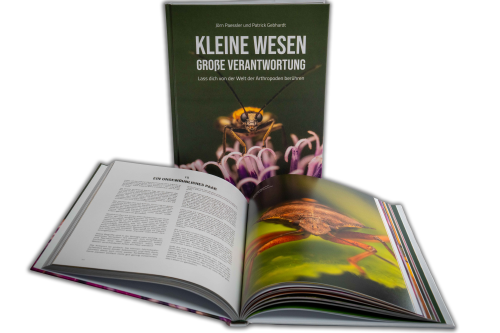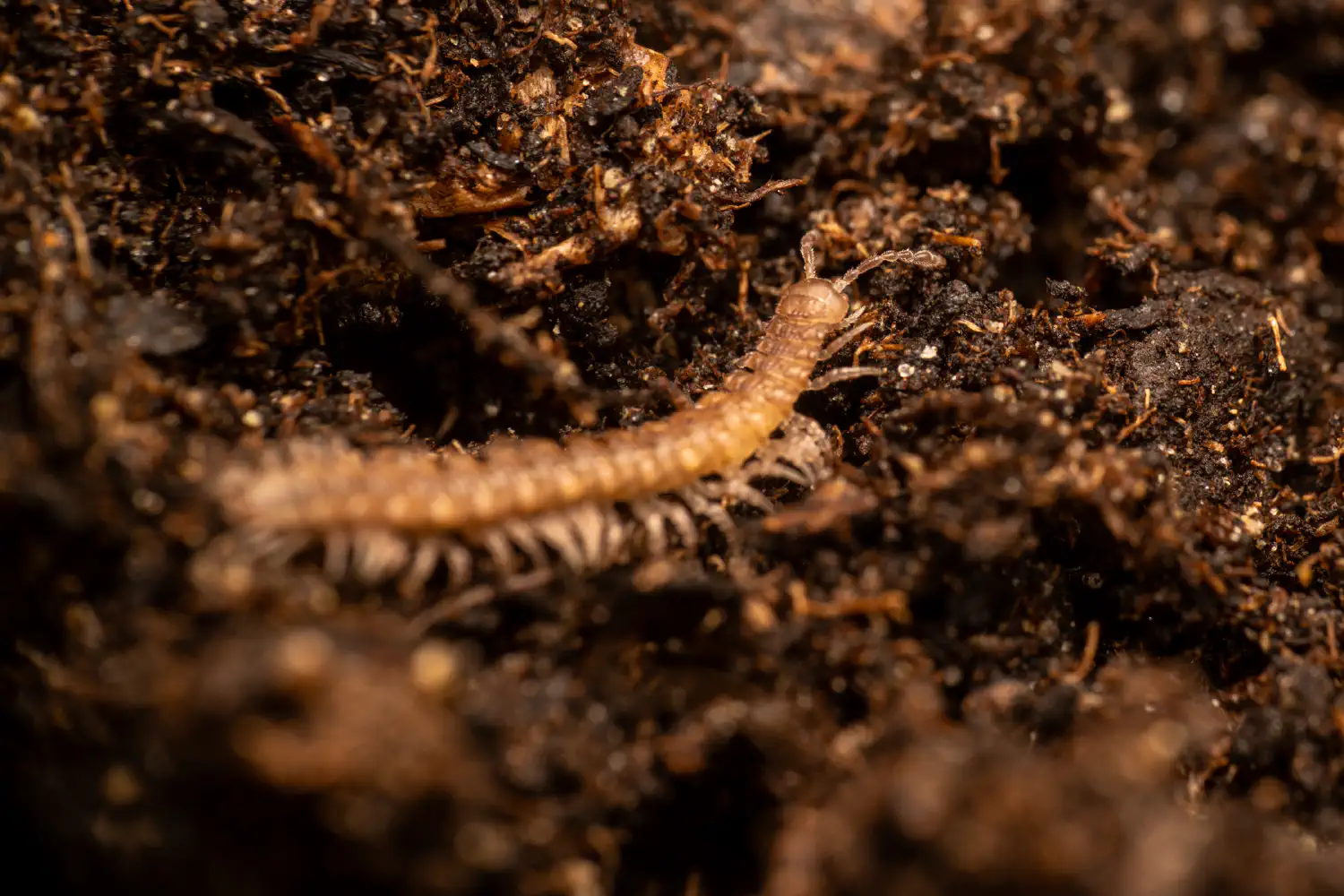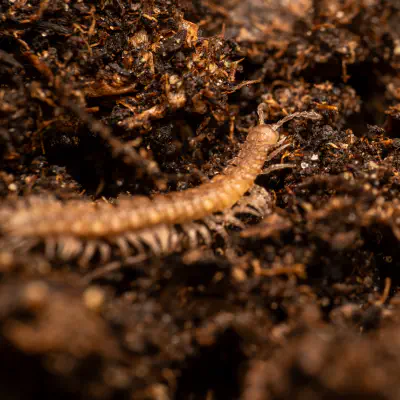Flat-backed Millipedes Lat. “Polydesmida“
Polydesmida (from the Greek poly “many” and desmos “bond”) is the largest order of millipedes, containing approximately 3,500 species, including all the millipedes reported to produce hydrogen cyanide (HCN).
Hierarchy
Description
Members of the order Polydesmida are also known as flat-backed millipedes, because on most species, each body segment has wide lateral keels known as paranota. These keels are produced by the posterior half (metazonite) of each body ring behind the collum. Polydesmids have no eyes, and vary in length from 1.4 to 134 mm. Many of the larger species show bright coloration patterns which warn predators of their toxic secretions. Adults usually have 20 segments, counting the collum as the first ring and the telson as the last ring. Juveniles have from 7 to 19 rings. In species with the usual 20 segments, adult females have 31 pairs of legs, but in adult males, the eighth leg pair (the first leg pair of the 7th ring) is modified into a single pair of gonopods, leaving only 30 pairs of walking legs.
Development
Polydesmids grow and develop through a series of molts, adding segments until they reach a fixed number in the adult stage, which is usually the same for a given sex in a given species, at which point the molting and the addition of segments and legs stop. This mode of development, known as teloanamorphosis, distinguishes this order from most other orders of millipedes. Millipedes in other orders usually continue to molt as adults, developing through either euanamorphosis or hemianamorphosis. Millipedes in this order typically develop through a series of eight stages, hatching with only 7 segments (including the telson) and 3 pairs of legs, then molting seven times. These eight stages feature 7, 9, 12, 15, 17, 18, 19, then finally 20 segments. The adults then reproduce and die without another molt. Species with fewer than the usual 20 segments as adults go through the same stages observed in other polydesmids until reaching maturity, which occurs one molt earlier for 19 segments or two molts earlier for 18 segments. Species with more than the usual 20 segments are thought to add these extra segments through additional molts, adding one segment per molt.
Ecology
Polydesmids are very common in leaf litter, where they burrow by levering with the anterior end of the body. These millipedes feed on decaying vegetation. Some species are prey for funnel-web spiders.
Classification
The species of Polydesmida are variously classified into four suborders (names ending in “-idea”), and 29 families, the largest (numerically) including Paradoxosomatidae, Xystodesmidae, and Chelodesmidae.
External links
Data related to Polydesmida at Wikispecies Media related to Polydesmida at Wikimedia Commons LucidCentral:Polydesmida External Anatomy of Polydesmida North American Polydesmida - BugGuide
Ancestry Graph
Further Information
„Flat-backed Millipedes“ on wikipedia.org
„Flat-backed Millipedes“ on iNaturalist.org
Copyright

This article uses material from the Wikipedia article Polydesmida the free encyclopedia Wikipedia which is released under Creative Commons Attribution-ShareAlike 4.0 International License). On Wikipedia a list of authors is available.

Little beings in print
Order our calendars and books today!
Compiled with love. Printed sustainably. Experience our little beings even more vividly in print. All our publications are available for a small donation.


